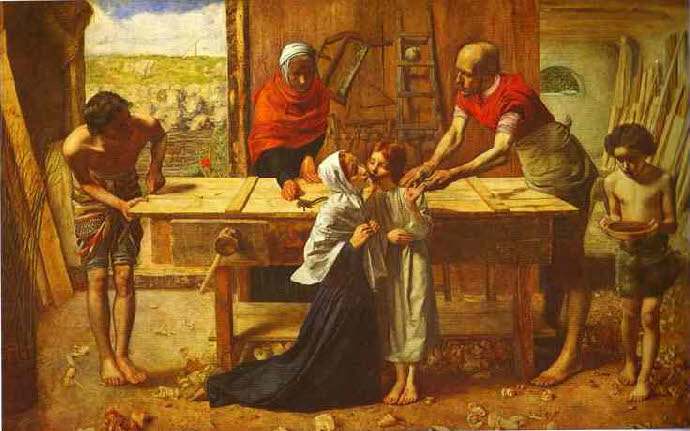“Painter, watercolourist and illustrator. Came to London from Jersey with his parents
in 1837. Entered Sass’s School in 1838; Royal Academy schools in 1840. Exhibited
his first work at the RA in 1846 at the age of sixteen. Won several prizes, including
the Gold Medal for historical painting in 1847. While at the RA schools formed a
lasting friendship with Holman Hunt. Together with Hunt and D. G. Rossetti he founded
the Pre-Raphaelite Brotherhood in 1848-49. By far the most accomplished painter of
the Brotherhood, he produced most of its memorable masterpieces. His work was reviled
by critics, until Ruskin came to the rescue in 1851. In 1853 he was elected ARA,
effectively dissolving the PRB. In the same year he went on an ill-fated trip to
Scotland with John Ruskin and Effie, who he was to marry in 1855. About this time,
he began to turn away from Pre-Raphaelite ideas, towards a more popular style. From
then on he produced a succession of popular works which earned him greater success
than any other English painter. He also became a fashionable society portrait painter,
numbering Gladstone, Tennyson and Carlyle among his many famous sitters. By the 1880s
his income was estimated at £30,000 a year. He also produced many fine illustrations
for magazines such as Good Words, Once a Week, etc., and many books. Exhibited at
the Royal Academy 1846-96, the British Institution, New Watercolour Society, Grosvenor
Gallery, New Gallery and elsewhere. Elected RA in 1863. In 1885 he became first English
artist to be made a Baronet. Elected PRA in 1896, but died a few months later. Although
his late work is regarded by most critics as inferior to his great Pre-Raphaelite
pictures, perhaps Ruskin’s judgment was more just… “whether he is good one year,
or bad, he is always the most powerful of them all”. Exhibitions of his work were
held at the RA in 1898 and 1967. After his death three sales were held at Christie’s,
of his own work, and engravings after them, and his private collection, on 1 May
1987, 21 March, 1898 and 2 July, 1898.”
(Biographical source: Wood, Christopher. The Dictionary of Victorian Painters.)



